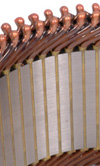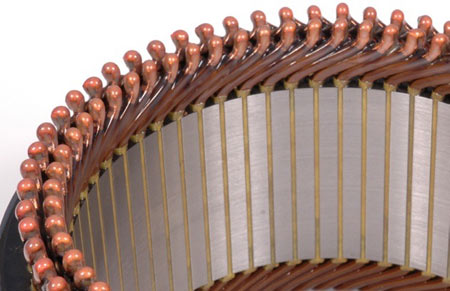Electric motors
 There has been a flurry of activity recently in motor racing associated with the use of electric power, either in the form of a hybrid system or as 'pure electric' motorsport. Motorcycle racing has been in the forefront of this movement. For those wanting to develop electric or hybrid vehicle technology, motorcycles offer a cheap route to doing so; they also encourage well-packaged, low-mass engineering solutions to any problems.
There has been a flurry of activity recently in motor racing associated with the use of electric power, either in the form of a hybrid system or as 'pure electric' motorsport. Motorcycle racing has been in the forefront of this movement. For those wanting to develop electric or hybrid vehicle technology, motorcycles offer a cheap route to doing so; they also encourage well-packaged, low-mass engineering solutions to any problems.
A particular area of motorsport that offers huge scope for development here is that of land-speed record breaking. People's endless endeavour to be the fastest shows no signs of diminishing, especially where the technologies involved are within reach of modestly funded teams and small manufacturers.
In August 2011 one manufacturer of production electric motorcycles, Lightning Motorcycles, set a new land-speed record for an electric motorcycle of nearly 216 mph, apparently using less than 20 US cents' worth of electricity for a typical run.
The electric motors used for the land-speed record are the same kind used in the production motorcycle. I discussed the design of the electric motors with their supplier's director of hybrid engineering. He explained that the motor used in the record-breaking motorcycle is a three-phase alternating current motor, with a permanent magnet rotor. The stator design is patented and gives this particular type of motor its name, High Voltage Hairpin (HVH). Rather than using stranded conductors for the stator windings, the HVH stator uses solid rectangular conductors. The conductors are formed with a 180º bend, forming the 'hairpin' and inserted into the stator before being twisted together with other hairpins to form continuous windings.
While these rectangular conductors are subject to higher eddy-current losses than multi-stranded conductors at higher frequencies, the difference at low frequency is not so marked. The advantage of using the solid-section conductor is that more cross-section of copper can be used in the stator slots, allowing higher currents to be used. Without specifically stating current densities for the record-breaking motors, the company said the conductors in existing HVH motors "are capable of over 50 A per square millimetre". With such high current densities, there is a lot of heat generated within the stator, so the motors are liquid-cooled.
The heat generated in the copper conductor has two means of escape. Heat transferred to the steel stator stack via direct contact between the conductor and the stator slot walls is removed by oil flowing around the periphery of the stator stack. Oil also flows around the end turns of the conductor, transferring heat directly from hot electrical conductor to cool oil.
Not only is the stator liquid-cooled, so too is the rotor, with the aim of removing heat from the magnets.

This application is a great example of how racing can positively influence mainstream automotive development. Although my contact is not a race engineer, his words on the value of racing should hearten us all. "What racing does is help to get products developed much more quickly. The creativity of the people in racing is awesome, so some really neat designs come from this area."
"We are not really actively from a company standpoint seeking out racing endeavours to showcase our product, but the performance of the product is really allowed to shine in racing. This is the truest form of racing to street being a dual path - solid, good performance motors provide a great foundation for creative minds to take to the next level in racing - and we get input on how to make a better motor for production vehicles."
Fig. 1 - Part of the stator from a High Voltage Hairpin (HVH) motor, as used to set the electric motorcycle land-speed record (Courtesy of Remy International)
Written by Wayne Ward